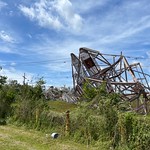STrRedWolf wrote: ↑Wed Sep 01, 2021 9:45 am
You have to remember, these are like MEGA-watt, high voltage lines. It may not be safe enough to bury the lines. I don't know if there's any studies on it or not.
Most high voltage transmission lines feeding power into major cities are at least 345 kV.
https://cdn.misoenergy.org/20190212%20P ... 317692.pdf
The per mile costs to build a 345 kV single circuit varies from $2.5 million to $3.1 million per mile.
The per mile costs to build a 345 kV double circuit varies from $4.3 million to $5.0 million per mile.
These are both above ground transmission lines.
https://gridnorthpartners.com/wp-conten ... -Lines.pdf
Under ground 345 kV double circuit transmission lines costs average between $39.8 million and $43.9 million per mile.
To go underground vs above ground costs about 10 times higher. Would you like to pay 10 times more for your electricity if all of the above ground transmission lines were rebuilt underground instead? Nah, I did not think you would.

The key point of that argument was rebuilding all of them. but underground transmission lines are built in environmentally and politically sensitive areas, for a few miles at a time. But hurricanes along the US coasts do not strike in just a few selected miles, they can strike anywhere along the 3600+ miles of the Gulf and Atlantic coastlines.
